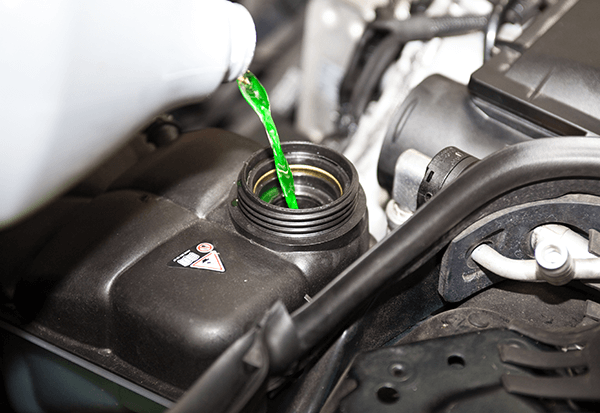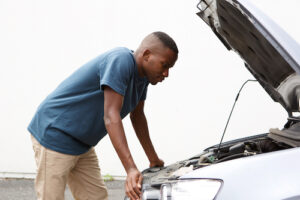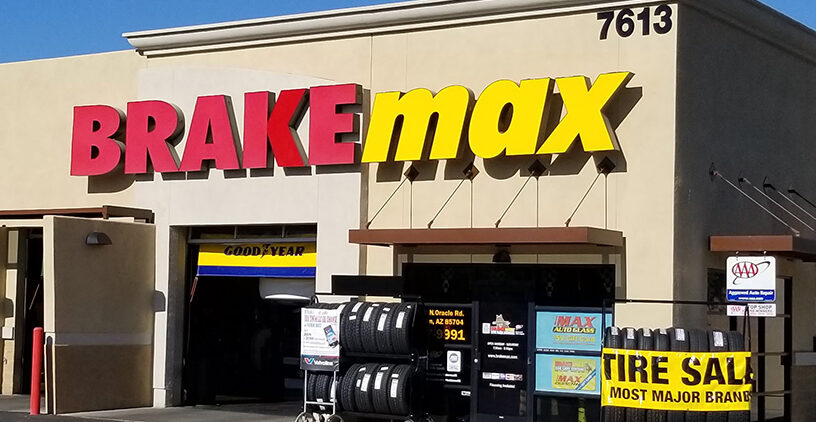Why Taking Care of Your Car's Radiator Is So Important

Your vehicle’s radiator is the most critical part of your engine’s cooling system. This system works to ensure your engine maintains a safe temperature while in operation. While your engine is running, a variety of moving parts generates a great deal of friction. This friction, along with fuel being burned, means excess heat.
When there’s a problem within the cooling system and it can’t properly control the heat, you can end up on the side of the road with steam pouring out of your overheated engine. Even worse, engine components can melt or meld together and lead to total engine failure. To avoid this, it is important to include your cooling system in your vehicle’s preventative maintenance routine, specifically your radiator.
By taking the initiative ahead of time to keep the radiator properly maintained, you can be confident that it will always be properly functioning and avoid more money and headaches in the future.
What Does the Radiator Do?
It’s safe to say that your cooling system is the main thing that prevents total engine failure. Your radiator is the central component that makes this happen.
The radiator is a large square with coils located at the front of the engine compartment directly behind your vehicle’s grill. Within the radiator is the engine’s coolant, also known as antifreeze. These two terms are often used interchangeably but refer to the same thing. The coolant mixture is a combination of 50 percent coolant and 50 percent water. This fluid prevents the water from boiling at temperatures up to 275 degrees Fahrenheit and freezing at temperatures as low as 30 degrees Fahrenheit.
The radiator itself does not contain any electronic parts but it is regulated by a thermostat near the engine that gauges the current engine temperature. When the engine starts to get too hot, the thermostat allows the radiator to push coolant through the engine.
As the coolant cycles through the engine, it absorbs the excess heat and travels from the engine, through the upper radiator hose, and back into the radiator. The large surface area of the radiator helps the coolant lower in temperature as it runs through the radiator’s coils. The cool air flowing in through the front grill also helps to cool the liquid as well. Once the coolant’s temperature has been lowered to the proper temperature, it travels through the lower hose of the radiator, back to the engine, and the cycle is repeated during the entire time the engine is running.
How To Extend The Life Of Your Radiator
Radiators used to be made entirely of metal and they regularly outlasted the life of the vehicle. Now, in most modern vehicles, the radiator is made mostly of plastic.
In today’s vehicles, a properly maintained radiator will usually last between 8 and 10 years. There are a couple of things you can do to help your radiator last as long as possible:
Proper Levels Of Coolant
The first thing to do is to keep an eye on your vehicle’s coolant level. The engine should always have the proper level of coolant in it before you drive. Coolant can escape when the radiator overheats or through leaks in the cooling system. If the level drops too low, the liquid will overheat and boil over, causing damage to the radiator and the engine itself. If it is during the hot Arizona months or you are about to drive on a long trip, it is even more important to maintain the proper level of coolant. Both of these scenarios make your vehicle more prone to overheating.
If you notice the coolant level is lower than it should be, it is easy to add more. First, make sure the engine is completely cool. Many modern cars have a separate coolant reservoir you can pour the coolant into using a funnel. If not, the liquid will be poured directly into the top of the radiator after removing the cap. Make sure to never open the radiator cap if the engine is still hot. Keep in mind that the liquid you want to be adding to the system is half water and half coolant. You can find a pre-mixed coolant at an auto parts store or you can mix it yourself.
Your vehicle’s owner’s manual will have specific instructions for how to top off the coolant in your vehicle.
Regular Radiator Flush
Another key aspect of extending the life of your radiator is to have a coolant flush done regularly. This service removes the old coolant and eliminates the particle buildup within the radiator to prevent clogging. If regular radiator flushes are not done, the excess buildup can spread throughout the entire cooling system. This can lead to parts of the system degrading and not being able to function properly. After the system is flushed, fresh new coolant will be added.
Of course, how often radiator flushes should be done varies by the type of vehicle. It can range from once a year to every 2-3 years. For high-mileage drivers or vehicles that endure tougher driving conditions regularly, additional flushes may be necessary. Check your vehicle’s owner’s manual for guidance on the recommended frequency of coolant flushes. Your mechanic can also help advise on what would be best for your vehicle.
Have Radiator Leaks Repaired Promptly
You may have a leak in your cooling system if you notice the vehicle is consistently low on coolant and needs to be topped off. Leaks can occur from the radiator itself or one of the hoses. It is important that as soon as you notice there may be a leak you take your vehicle to a reliable auto mechanic.
Small leaks in your cooling system can quickly lead to larger and much more expensive problems if left unchecked.

Signs Your Engine Is Starting To Overheat
It is important to know the common warning signs that your engine is starting to overheat. These include:
- Your vehicle’s temperature gauge has risen quickly past the normal range and into the red or “H” range.
- Steam, which can resemble smoke, is coming from under the vehicle’s hood.
- Quickly reduced engine power.
- Thumping sounds come from the vehicle’s engine as components are heating up.
- A strange smell came from the engine into the vehicle’s cabin. Leaking coolant can often smell sweet like molasses.
If you notice any of the above things happening and you are driving, safely pull your vehicle over and turn off the engine. Do not open the hood immediately. Once the engine has cooled off enough, check the coolant level and add coolant if needed.
Whether it is being towed or you can safely drive it without it overheating again, bring your vehicle straight to your nearest BRAKEmax Tire & Service Center location. We can diagnose the problem and perform the necessary radiator repairs.
BRAKEmax Is Here For All of Your Radiator Repair & Maintenance Needs
If you notice your engine is starting to overheat, it may be due to a problem with your radiator or it could be another part of the cooling system. It’s important to bring your vehicle to your closest auto shop to pinpoint the problem and repair it before further damage occurs.
The ASE-certified mechanics at our Tucson auto shops have the experience and expertise to help you properly maintain your cooling system and perform any cooling system repairs you may need. We’ve been the trusted answer for auto maintenance and radiator repair in Tucson and surrounding areas since 1997.









